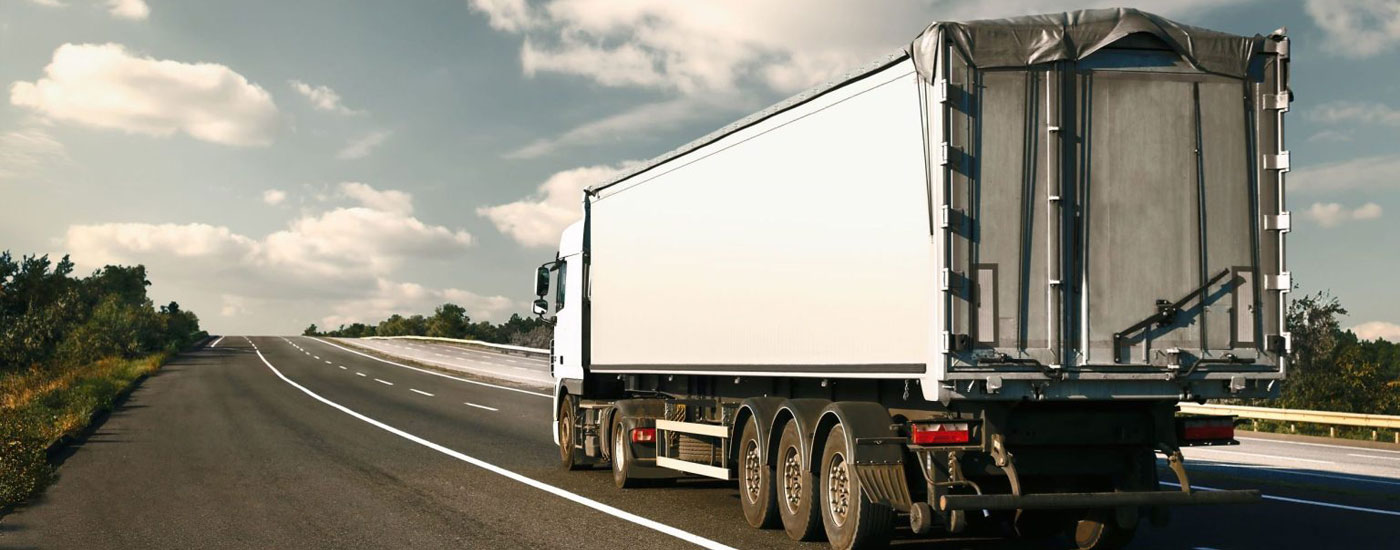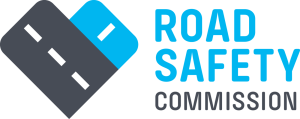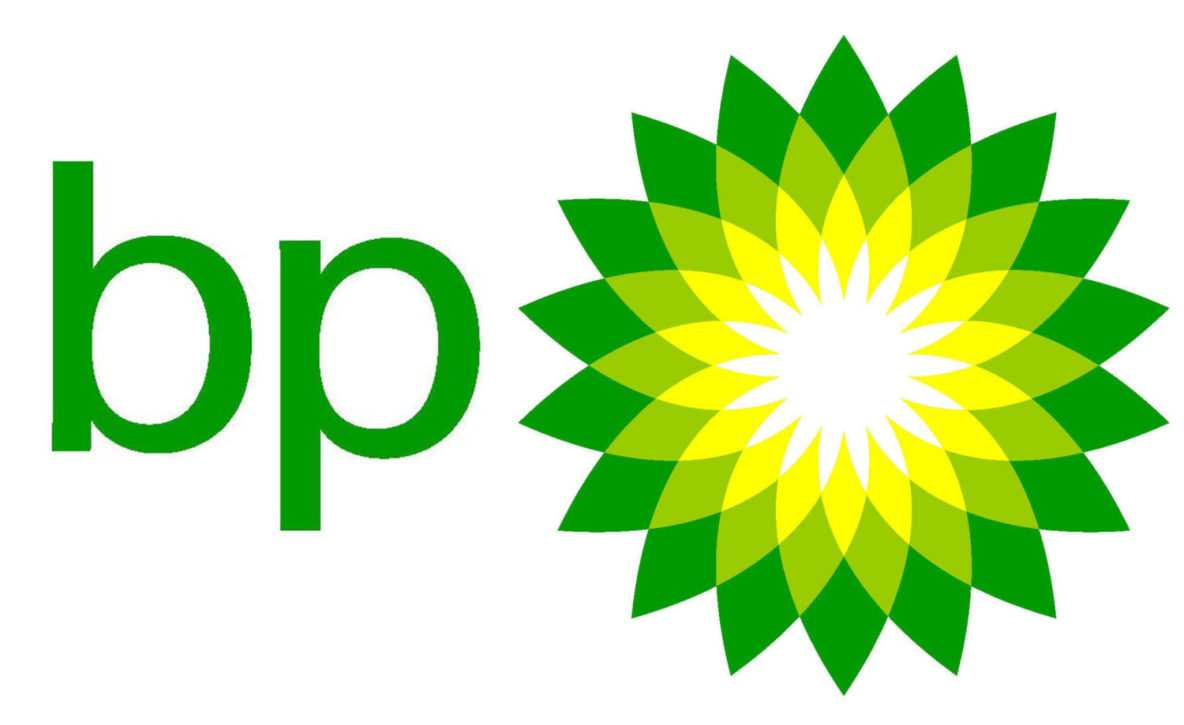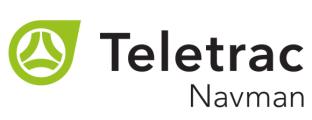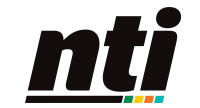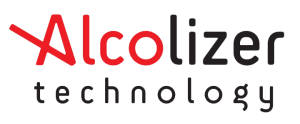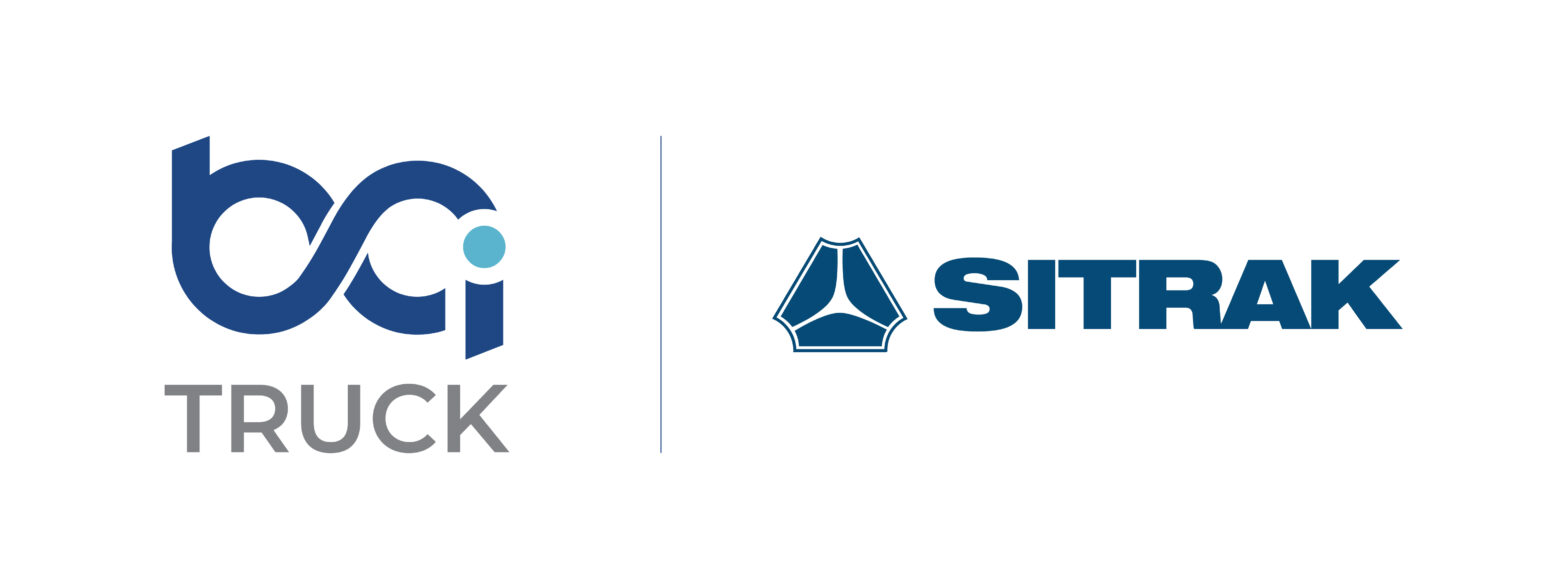The 29th TRANSAFE WA Road Transport Industry Safety Forum WRAP UP! – March 2024
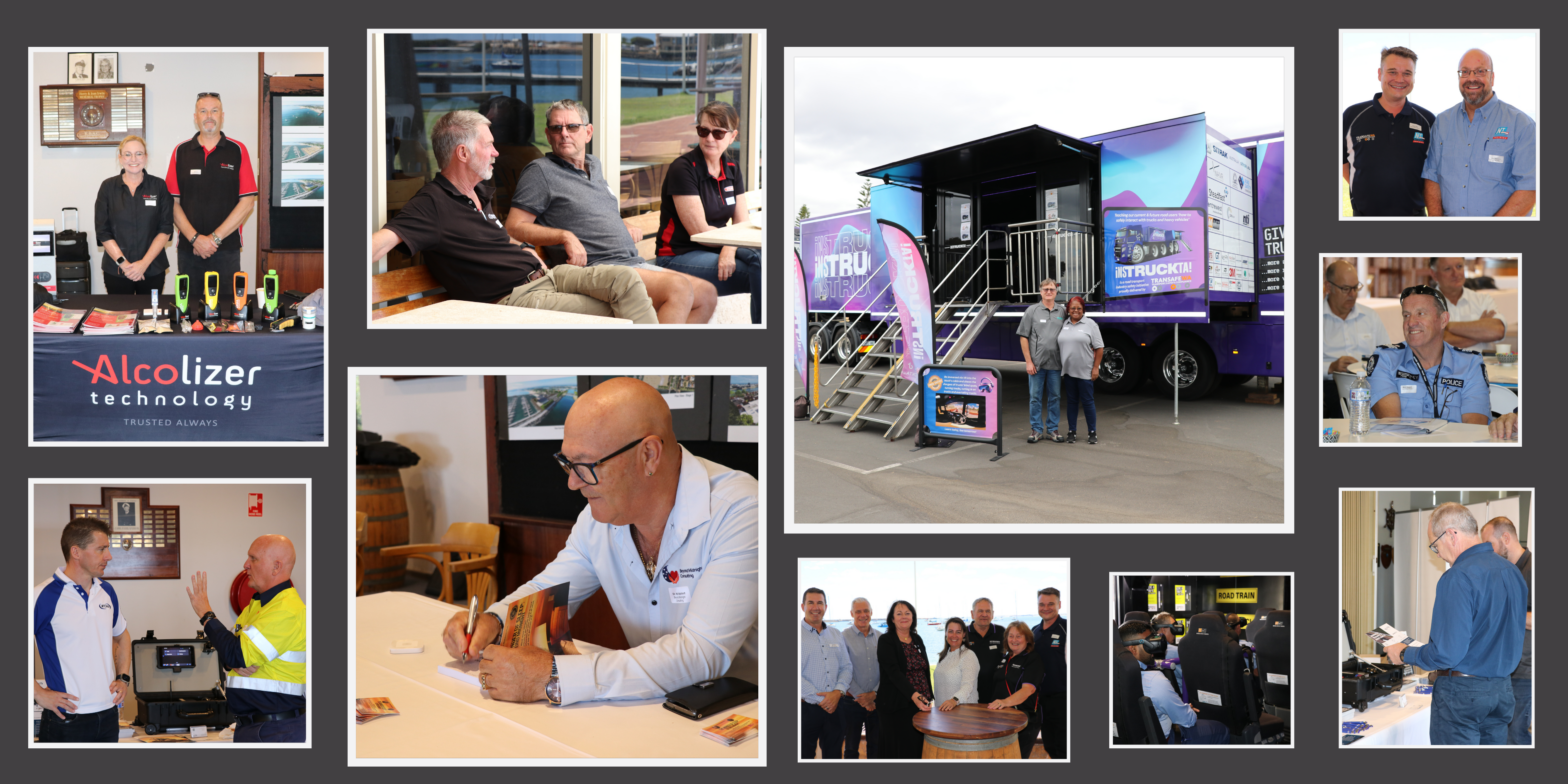
On the 12th of March 2024, a group of safety-conscious individuals gathered on the shores of Koombana Bay in Bunbury for the 29th Safety Forum. Throughout the day, knowledgeable speakers delivered informative presentations on various aspects of safety relevant to the road transport industry. The forum provided a platform for open dialogue and discussion, allowing attendees to pose questions, share experiences, and exchange ideas.
This event was proudly sponsored by MT Data and Southern Ports.
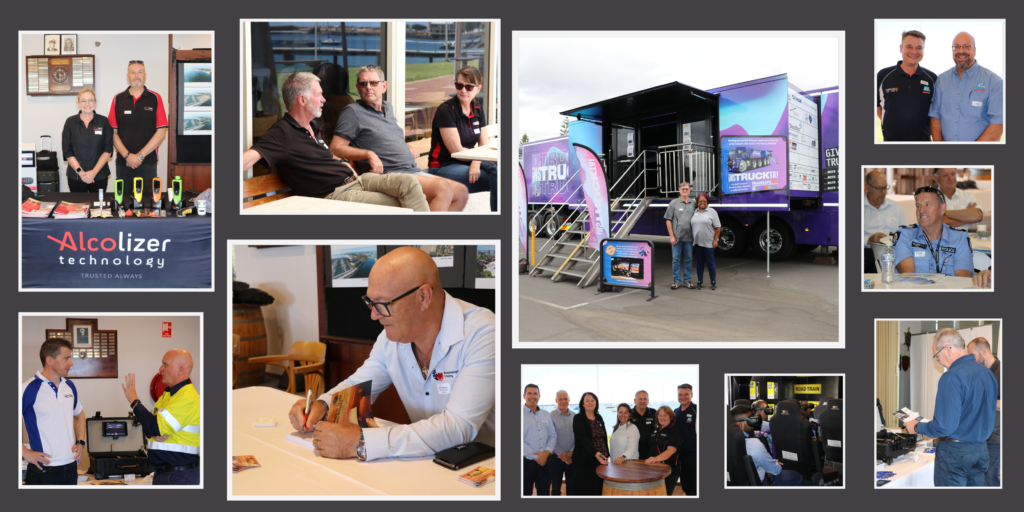
The morning began with Aaron Milne of Main Roads WA presenting an update on the Bunbury Outer Ring Road Project. With close to 70% of the construction already complete we took a guided tour via some impressive drone footage. Projects like these not only address congestion and improve traffic flow but also contribute to the local economy by creating job opportunities. It’s great to see infrastructure developments that benefit both residents and commuters alike.
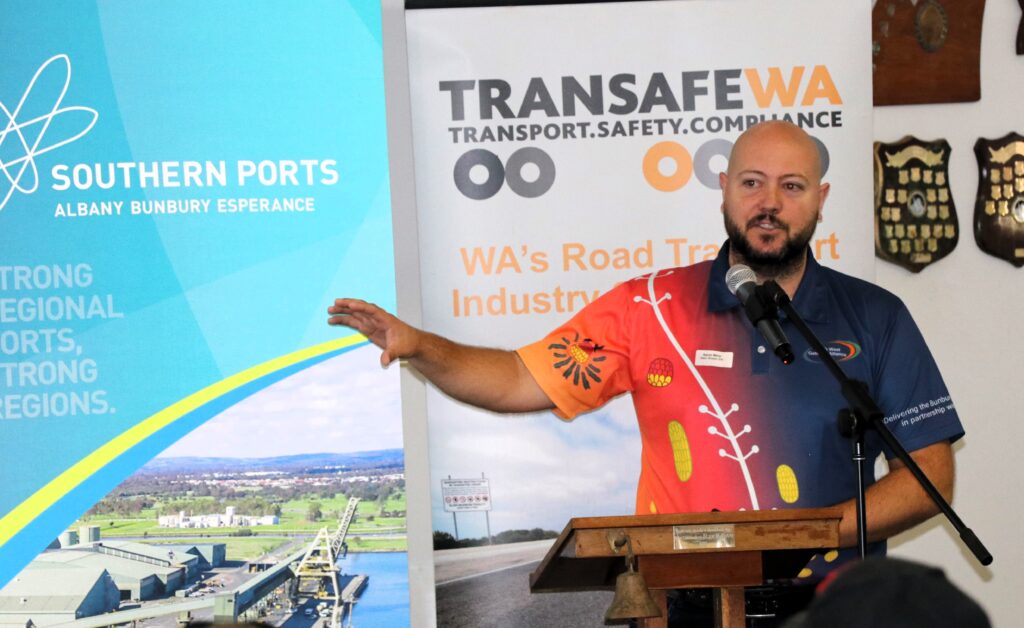
Aaron Milne | Main Roads WA | Asset Manager Planning – South West Region
View the Presentation: Main Roads WA – Bunbury Project Update
The Regional Manager of Southern Ports, Lee Smith provided the attendees with a Port of Bunbury Project Update. A record trade season of 34.01 million tonnes of commodities being exported from the three ports indicates significant economic activity in the regions. With over 107,000 truck movements in the last year alone Southern Ports is prioritising safety improvements. Ensuring safety measures not only protect workers and visitors but also helps contribute to the smooth operation of port activities.
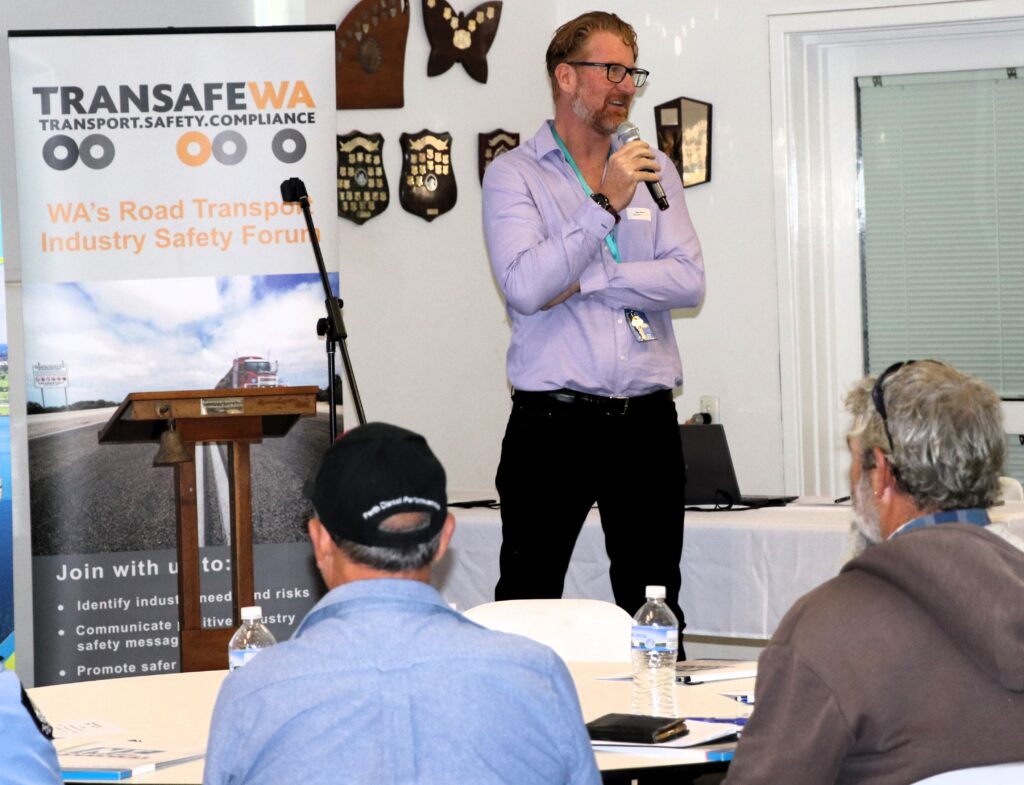
Lee Smith | Southern Ports | Regional Manager – Port of Bunbury
View the Presentation: Southern Ports – Port of Bunbury Update.
Rick Post’s insurance market update provided valuable insights and recommendations for attendees. Some of the key points he covered:
- Increased loadings on adverse claims
- Potential premium increase due to changes in the workers compensation act.
- Importance of insurance reviews and valuations.
Rick’s presentation served as a reminder for businesses to stay vigilant about their insurance coverage, especially in the face of changing market conditions and regulatory developments. By taking proactive steps to review their insurance policies and conduct valuations, businesses can better protect themselves against potential risks and liabilities.

Rick Post | Centrewest Insurance Brokers | Executive Director
View the Presentation: Centrewest Insurance Brokers – Insurance Market Update.
The Q&A session with James Burton from MT Data, hosted by TRANSAFE WA chairperson Niomi Hurley, provided valuable insights into how telematic systems can enhance worker performance and workplace safety. Here’s a summary of the key features and benefits discussed:
Geofencing Capabilities: Telematic systems offer geofencing abilities, allowing businesses to define virtual boundaries and set up alerts or reporting based on location. For example, geofencing can be used to notify operators when they approach specific areas, such as railways, and enforce speed limits. Supervisors can also receive alerts if speed limits are breached.
Communication Functionality: Telematic systems enable communication with operators by sending spoken messages through the system. This feature is particularly useful for notifying drivers about road closures, weather conditions, route changes, or other important updates while they are on the road.
Fatigue Management: Telematic systems can record and manage fatigue hours, ensuring compliance with national or company-specific regulations. Operators receive notifications about their hours in real-time, and supervisors can also monitor fatigue levels to mitigate the risk of accidents caused by driver fatigue.
Point System for Driving Behaviour: Telematic systems can implement a point system where operators accumulate points for adhering to driving conditions and lose points for breaches. This system can foster a culture of competitiveness within the team or be used as a reward and recognition initiative to incentivize safe driving behaviours. Telematic systems can implement a point system where operators accumulate points for adhering to driving conditions and lose points for breaches. This system can foster a culture of competitiveness within the team or be used as a reward and recognition initiative to incentivize safe driving behaviours.
Vehicle Behaviour Monitoring: Telematic systems allow businesses to monitor vehicle behaviour, including excessive braking, fast cornering, and acceleration. By tracking driving behaviours, businesses can identify areas for improvement and promote safer driving practices among operators.
Camera Systems: Telematic systems often include camera systems with driver-facing, forward-facing, and rear-facing cameras. These cameras can capture footage during incidents or within specific geofenced areas. Post-incident footage can be retrieved for analysis or insurance purposes, enhancing accountability and safety.
Overall, the discussion highlighted how telematic systems offer comprehensive solutions for improving worker performance, enhancing workplace safety, and promoting responsible driving behaviours within fleets.
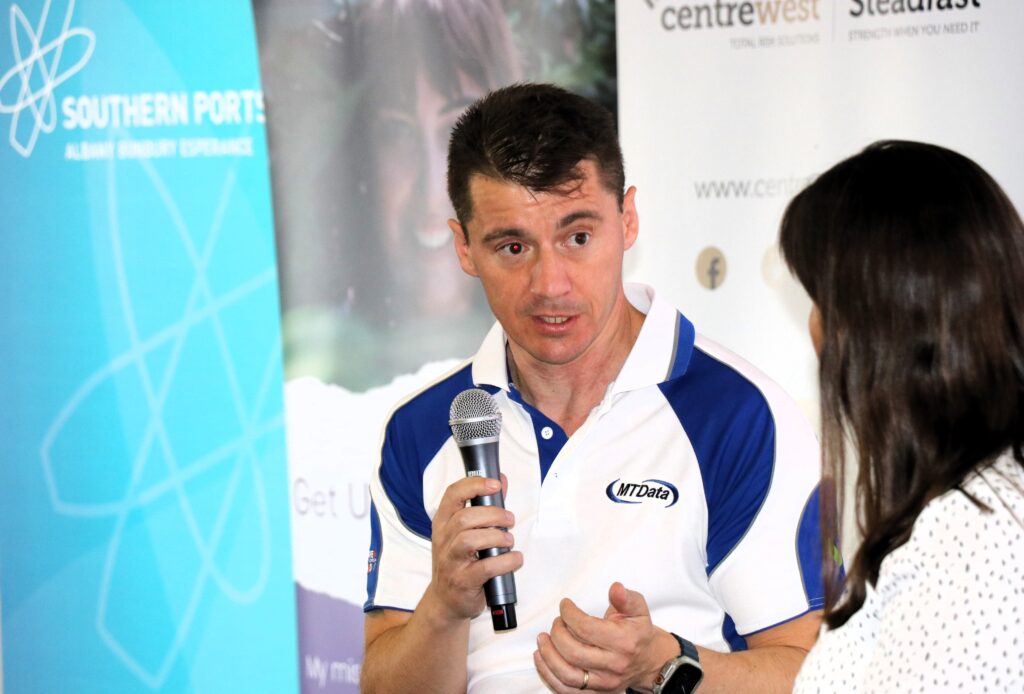
James Burton | MT Data | State Manager
Nick Fox from Alcolizer Technology spoke of how implementing a well-defined drug deterrence strategy and policy are crucial. By establishing guidelines and procedures from the beginning, organisations can promote trust and credibility among employees. A clear drug deterrence strategy not only helps in maintaining a safe work environment but also fosters a culture of responsibility and accountability. Employees are more likely to adhere to policies when they understand the reasons behind them and trust that they are implemented fairly. It’s essential for companies to prioritise the safety and well-being of their workforce while also upholding standards of professionalism and integrity.
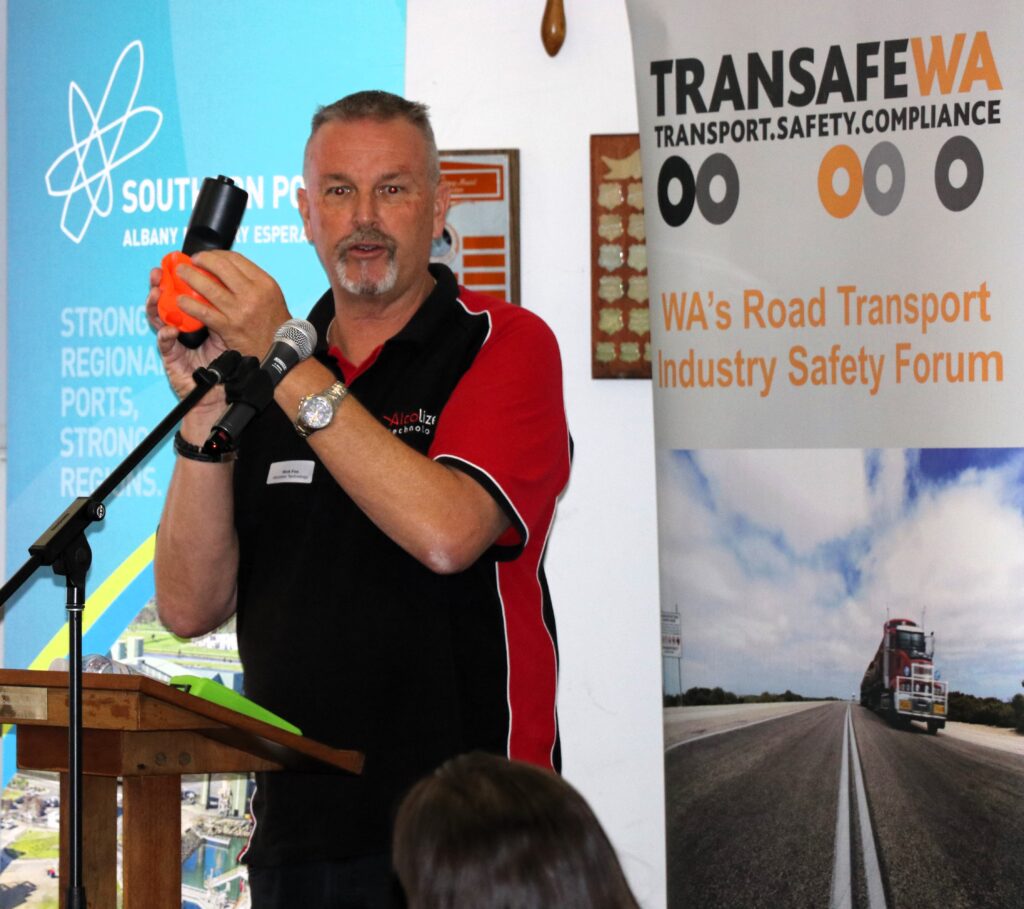
Nick Fox | Alcolizer Technology | National Drug & Alcohol Manager
View the Presentation: Alcolizer Technology – Drug & Alcohol Deterrence Strategies in the Workplace.
Dr. Nick Mabbott’s advice on staying healthy on the roads is invaluable. Adequate deep sleep is essential for alertness and cognitive function, especially for those who spend long hours driving. Paying attention to diet and staying physically active can also contribute to overall well-being and reduce the risk of health issues like type 2 diabetes. Moreover, regular medical check-ups, including screenings for conditions like high blood pressure and skin checks, are important preventive measures. By prioritizing sleep, nutrition, exercise, and health screenings, individuals can help ensure their safety and well-being while on the road.
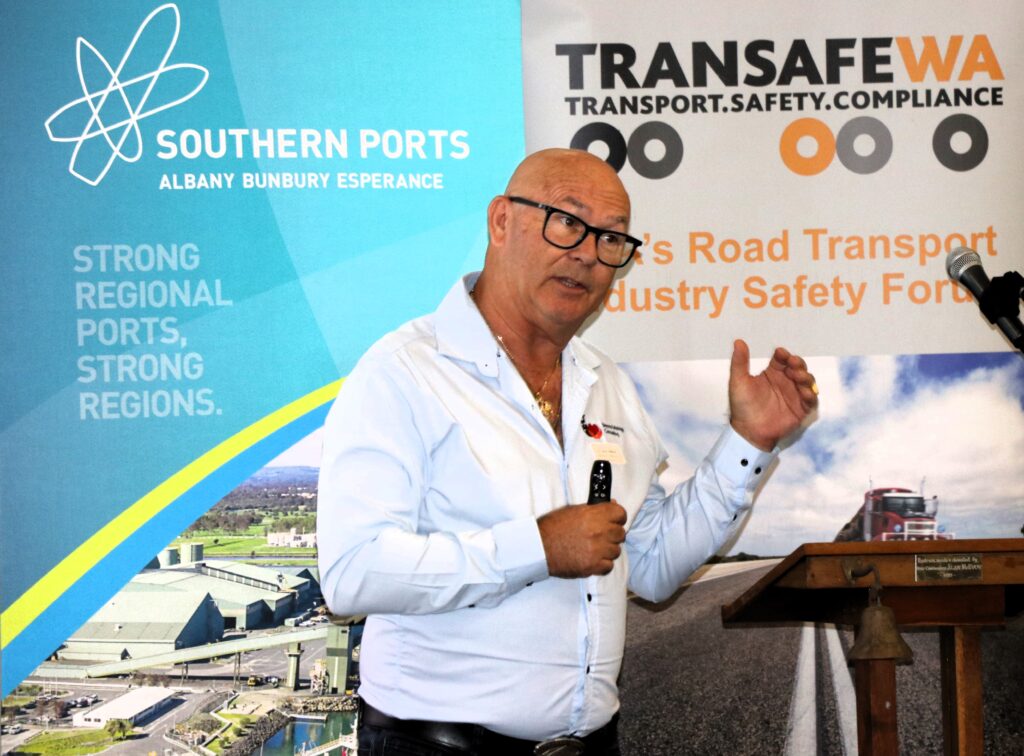
Dr. Nicholas Mabbott | Beyond Midnight Consulting | Director – Fatigue Risk Management Specialist
View the Presentation: Beyond Midnight Consulting – Keeping Healthy on the Road.
Niomi Hurley’s presentation- Transforming Energy into Influence explored the 4 different types of energy and how they can provide valuable insights into personal dynamics and interactions. By understanding how factors can affect these energies, individuals can learn to manage and optimise their own energy levels. Providing tools for raising energy vibration empowered attendees to cultivate a positive atmosphere within the workplace and enhance their overall well-being. Niomi’s presentation was not only informative but also equipped individuals with practical strategies for personal and professional growth. Importantly Niomi’s presentation highlighted the safety benefits that can be derived from drivers’ paying attention to energy levels and how to maximise them.
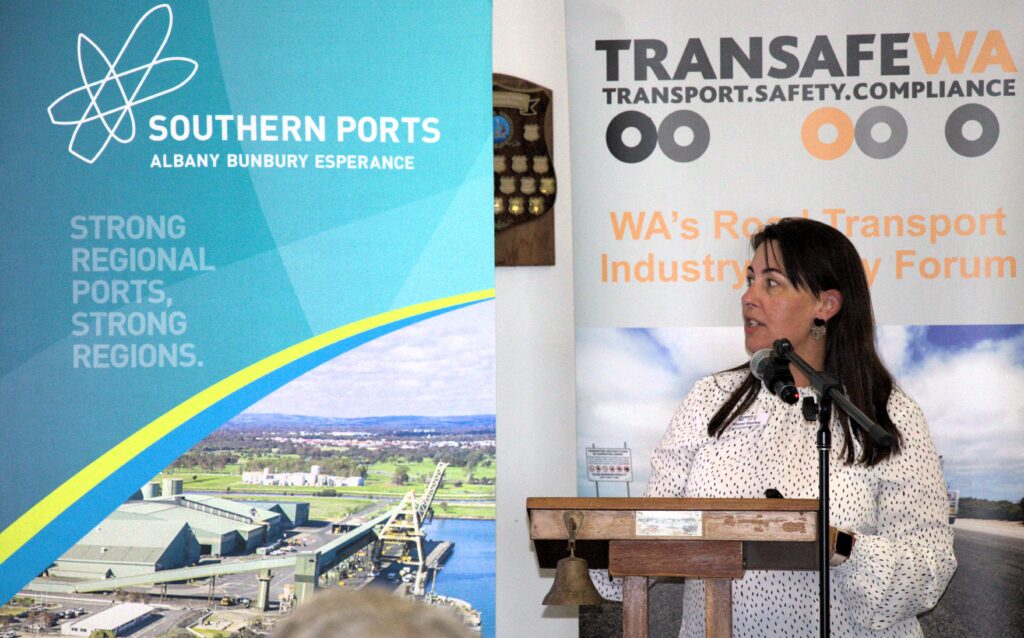
Niomi Hurley | Get up & Grow Consulting | Founder
View the Presentation: Get Up & Grow Consulting – Transforming Energy into Influence.
Ken Cheney’s initiative to start a dialogue about keeping road work workers safe was very well received. Safety in road construction and maintenance is crucial given the risks associated with working in proximity to traffic and heavy machinery. By fostering an open dialogue and collaboration within the road transport industry, we can work together to identify challenges, share best practices, and implement effective solutions to keep road work workers safe.
As part of that collaboration, Ken put a call out to attendees and others in the transport industry to make suggestions about how safety for traffic management personnel can be improved.
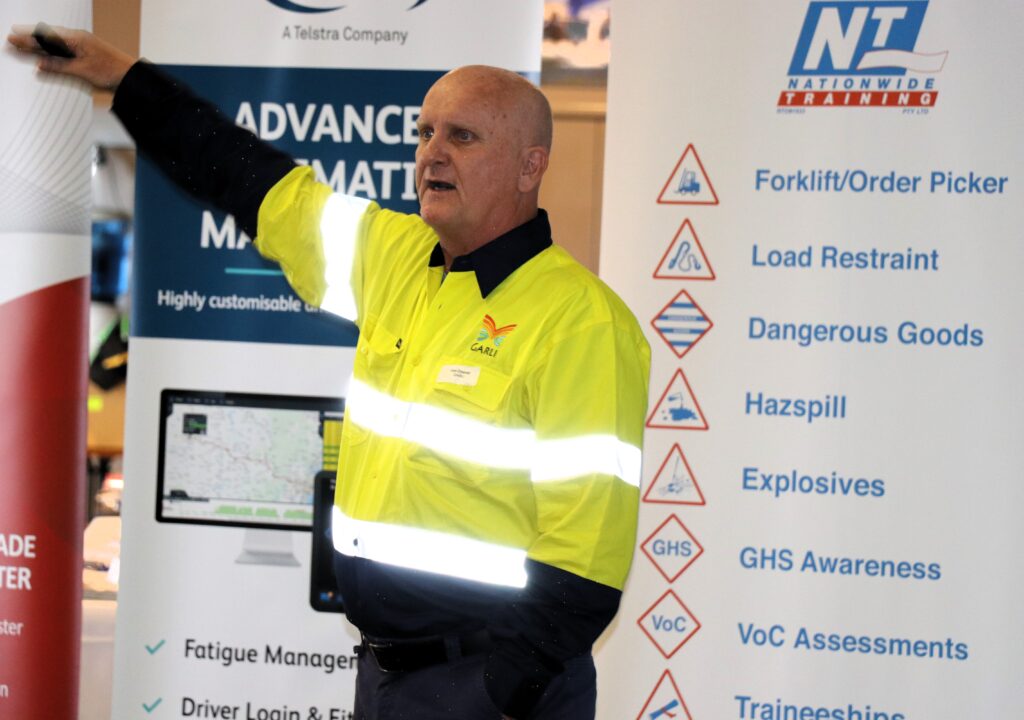
Ken Cheney | GARLI | HSEQ Superintendent
Jerry Thompson provided valuable insights into the critical aspects of transporting dangerous goods and the associated liabilities within the supply chain. Some of the key points he touched on:
- Documentation Compliance
- Correct Emergency Equipment
- Vehicle Compliance
- Transport Emergency Response Plan
By focusing on key areas such as these, organisations can better manage the risks associated with transporting dangerous goods and minimise the potential for liability in the event of a breach.
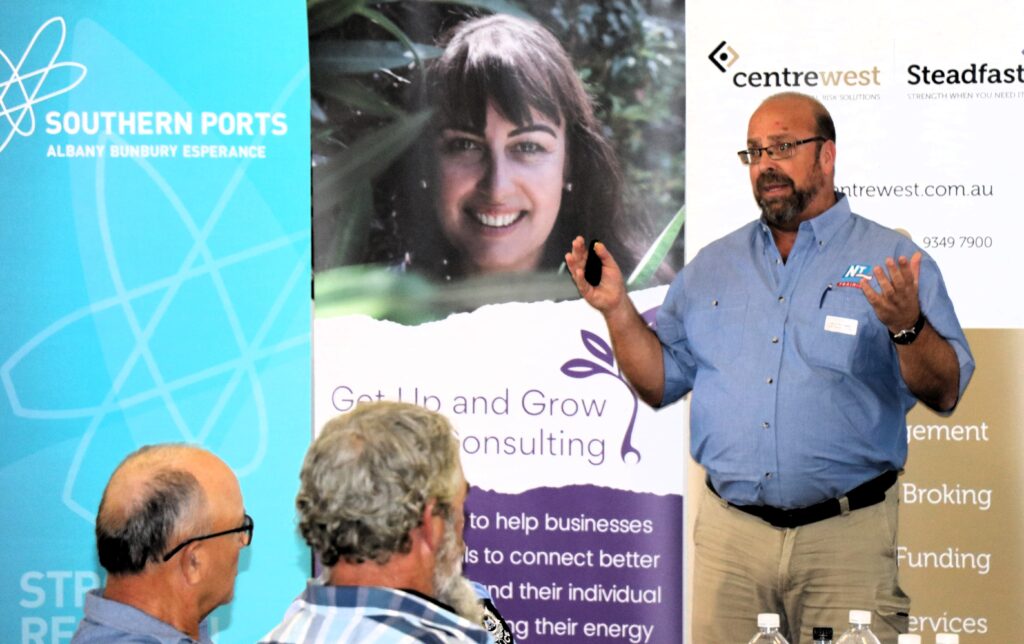
Jerry Thompson | Nationwide Training | Lead Trainer & Assessor
View the Presentation: Nationwide Training – Dangerous Goods & Awareness for Road Transport.
TRANSAFE WA will continue to organise forums to serve as a testament to our commitment as well as our sponsors’ commitment towards creating safer road transport environments. Let’s keep up the momentum in prioritising safety and working together to prevent accidents and save lives. Hope to see you all at forum number 30!

